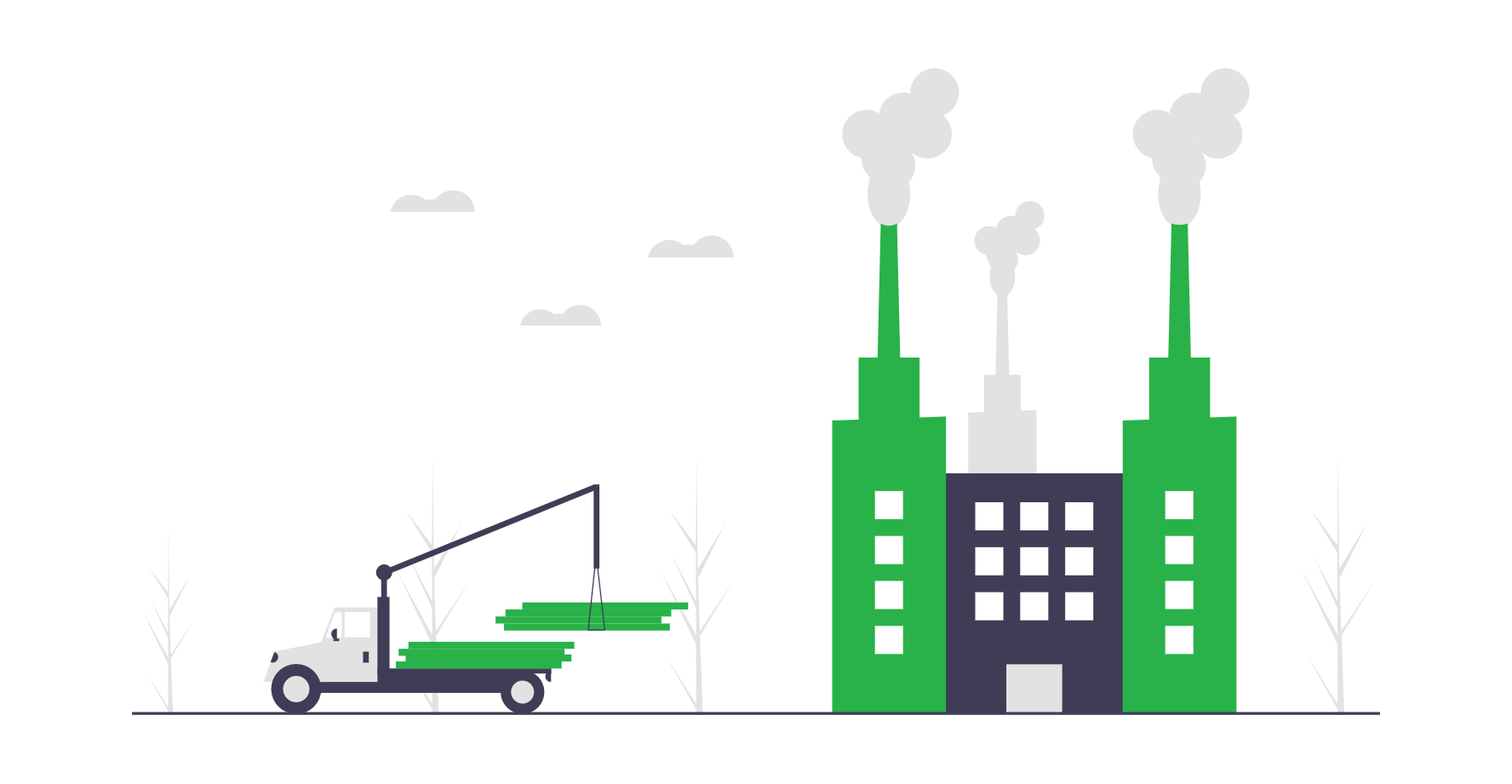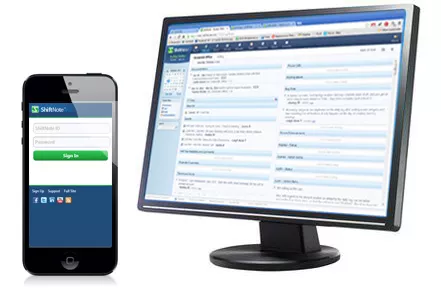

What are shift notes?
Shift notes are an essential tool for communicating between shifts at restaurants, hotels and manufacturers. This comprehensive guide will help you understand shift notes and how to put them into use at your business.

Overview
Shift notes are the heartbeat of any shift-based business. Whether you run a restaurant, manage a hotel team, or oversee a manufacturing line, shift notes help keep communication clear, consistent, and actionable from one shift to the next.
But here’s the thing: many businesses still rely on scribbled notebook entries, messy whiteboards, or outdated texts to pass along important information. The result? Miscommunication, confusion, missed tasks, and in some cases… showing up at 5 a.m. for a delivery that’s not coming.
Shift notes solve that.
At ShiftForce, we’ve worked with thousands of managers to turn chaotic, old-school shift transitions into streamlined, documented operations that keep teams aligned and accountable. Let’s break it down.
Learn More about ShiftNote +Scheduler
Why do shift notes matter?
Think of shift notes as the chain that connects each shift and connects your team to your business goals. They’re not just reminders, shift notes are culture-shapers, liability reducers, and performance boosters.
-
Clear Communication
Shift notes make it easy for one shift to hand off responsibilities to the next. No more “I didn’t know” or “nobody told me.”
-
Operational Consistency
From customer complaints to equipment malfunctions, shift notes provide a running log of everything that matters. Managers stay in the loop. Patterns emerge. Problems get solved faster.
-
Reduced Turnover & Frustration
When employees and managers feel informed and empowered, they stick around. And when everyone’s on the same page, your business runs smoother.


What goes into a good shift note?
Shift notes are more than a simple post-it note with a few words on the bulletin board. A good quality shift note should include the kind of details that actually move your business forward. Some of the most important types of shift notes include:
- - Important shift updates (e.g. “Cooler #2 is running warm — maintenance called.”)
- - Customer feedback or complaints
- - Lost & found tracking
- - Incident reports or safety notes
- - Sales performance or labor cost updates
- - Staff recognition and shoutouts
- - Task completion notes and checklist confirmations
Shift notes are even more powerful when all of the notes are searchable, timestamped, and accessible across your team in a digital logbook.
Shift Notes vs. Paper Logbooks (and Other Inefficient Workarounds)
The Problem With Paper
Paper logbooks get misplaced, destroyed, or forgotten. You can’t search them. You can’t confirm if someone actually read the notes. And good luck tracking patterns or trends over time.
The Problem With Chat Apps
Group chats or messaging apps (like Facebook Messenger or WhatsApp) are great for memes — not for shift accountability. Important updates get buried under birthday wishes and dog photos.
The Better Way
ShiftNote (part of ShiftForce) is built specifically for shift-based teams. It’s your digital manager logbook, built for restaurants, hotels, and other shift-heavy environments.
It gives you:
- - A centralized communication hub
- - A read-receipt log so you know who saw what
- - A searchable database of shift history
- - Easy-to-use mobile and desktop access
- - Customizable categories to match your business

Real Shift Notes in Action
Restaurant Use Case
A server slipped during a busy Friday night shift. The manager logs it in a shift note, tags it as an incident, and includes follow-up notes from HR. The next manager sees the update, ensures a safety checklist is completed, and avoids a repeat issue.
Hotel Use Case
Guest in room 206 had an issue with their A/C. Front desk logs it, maintenance fixes it, housekeeping follows up — all tracked and confirmed across shifts with zero miscommunication.
Manufacturing Use Case
A piece of equipment overheats during 3rd shift. The note is logged, tagged for engineering, and reviewed in the morning. The maintenance team already has what they need to act — thanks to clear documentation.
The ROI of Better Shift Notes
Businesses that use shift notes regularly will avoid a lot of mistakes and costs, ultimately achieving ROI through a centralized shift note system:
- - Fewer Mistakes: Nothing slips through the cracks when everything is documented.
- - Faster Problem Solving: Patterns are easy to spot and address.
- - Higher Accountability: Read logs show who’s informed and who isn’t.
- - Better Culture: Employees feel seen and heard — especially when they’re recognized in the log.
- - Lower Turnover: Communication gaps are one of the top reasons good employees leave. Solve it, and retention improves.
How to Start Using Shift Notes (the Right Way)
1. Choose a Digital Tool That Works for You
Paper won’t cut it. ShiftNote is built for exactly this purpose — shift communication, logbooks, and documentation that’s easy to use and easy to trust.
2. Customize Categories
Create note categories that reflect your business: Maintenance, Guest Feedback, Lost & Found, Sales, HR Notes, etc.
3. Train Your Managers
Make logging part of the routine — end of every shift. Make sure managers know what should (and shouldn’t) be in the notes.
4. Make It Part of Your Culture
Reference notes in team meetings. Recognize staff who contribute. Use them to celebrate wins and coach for improvement.

Best practices for writing shift notes in specific industries:
Restaurants: Speed, clarity, and accountability are everything.
Shift notes help streamline restaurant operations and build culture — all while reducing turnover and boosting guest satisfaction.
Restaurant shift notes should include detailed updates on items that have run out or vendor issues, so the next shift isn’t blindsided. They’re also a great way to highlight team recognition — for example, “Maria crushed it with table turns during the lunch rush and hit the highest sales!”
Managers can track maintenance issues early to prevent Saturday-night disasters, such as an ice machine leak or broken fryer. Shift notes also serve as a record of guest complaints or feedback, especially for repeat visitors, so follow-up feels intentional and personal.
Organizing notes by category, like “Kitchen,” “Front of House,” “Bar,” “HR,” or “Guest Feedback,” makes searching and reporting fast and efficient. Building the habit of reviewing shift notes during pre-shift huddles keeps everyone aligned and ready for a smoother, more productive service.

Hotels: Keeping different teams aligned
In hospitality, small miscommunications can lead to big service misses. Shift notes keep teams aligned across departments — from front desk to housekeeping to engineering — ensuring every guest experience is consistent and professional.
Hotel managers should log room-specific issues such as “Room 142 shower head loose — maintenance scheduled” to make sure repairs aren’t overlooked. Shift notes are also ideal for passing off VIP guest requests between front desk teams, maintaining continuity and personal service. Documenting guest incidents, lost items, billing disputes, and late check-outs in one centralized, searchable place saves time and reduces friction between departments. Notes can also be used to recognize employees for excellent service, like “Emily went above and beyond helping a guest find a nearby pharmacy.”
Adding department tags — such as “Housekeeping,” “Engineering,” “Front Desk,” or “F&B” — makes it easy to sort and filter notes. Using a digital tool like ShiftNote with read-tracking ensures all managers and supervisors are informed before peak check-in times, preventing oversights and elevating the guest experience.

Manufacturing: Smooth shift transitions are the key to productivity
On the manufacturing floor, shift transitions can make or break productivity. With moving equipment, safety protocols, and strict production timelines, shift notes serve as the operational lifeline that keeps everyone aligned and accountable.
Manufacturing teams should record machine performance issues or maintenance requirements with clear timestamps and technician notes. Documenting safety incidents or near misses helps improve reporting and prevent future accidents. Shift notes are also the perfect place to capture quality control concerns, rejected batches, or material shortages across shifts. Tracking production targets and results provides clarity on whether teams are staying on pace and helps identify bottlenecks quickly.
To make analysis easier, tag notes by line, zone, or process. Over time, managers can use these notes to create weekly performance reviews — highlighting successes, spotting slowdowns, and planning improvements proactively. This practice not only improves efficiency but also creates a stronger safety culture and a sense of shared accountability among team members.

Why is ShiftNote the industry leading app for shift notes?
There are plenty of tools that claim to help with communication, but ShiftNote was built from the ground up for shift-based businesses. With over 20 years of experience and 100,000+ daily users, ShiftNote is trusted by operators who need reliable, fast, and easy shift documentation — not just another app to check.
Whether you're running a restaurant, managing a hotel, or overseeing a production floor, ShiftNote gives your team one place to communicate clearly and consistently every single shift.
- Over 100,000 daily users across 4,000+ businesses
- Trusted by top brands like Landry’s, CPK, First Watch, and Twin Peaks
- Built specifically for restaurants, hotels, and other shift-based teams
- Easy-to-use web and mobile app interface
- Custom categories and read-receipts to track accountability
- Fast setup, team onboarding, and personalized support
Final Thoughts on Shift Notes
Shift notes aren’t optional. They’re essential.
If you want your team to be aligned, your customers to be happy, and your managers to actually enjoy their jobs — a centralized shift note system like ShiftNote is the tool to make it happen.
Don’t let important info live on sticky notes or in someone’s head. Build a better shift handoff. Build a better business.
Ready to try ShiftNote?
Start a Free Trial
Or explore more ways ShiftForce helps reduce turnover and improve engagement with our Employee Engagement Guide.
What managers are saying about ShiftNote and ShiftForce
Testimonials provided by people currently using ShiftNote who joined our Champions program which includes a gift card reward.
Latest Posts from Our Blog
Looking for some quick tips? Read our blog with industry-specific tips and guides to make managing easier.
5 Ways to Use Shift Notes to Boost Team Accountability
The Hidden ROI of Shift Notes for Hotel Teams
Need help reducing turnover?
Download the guide with 50 unique ideas to show employee appreciation year round.
Download the Guide



